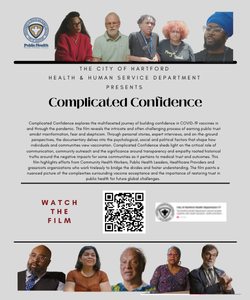By Nick Tilsen
Minutes before leaving office, former President Biden issued executive clemency to Leonard Peltier, commuting the remainder of his life sentence to be served at home. While the most just outcome would have been a full pardon, Peltier’s release after 49 years of incarceration is an undeniable victory. Now, at 80 years old, Peltier has the chance to reunite with his family, receive critical medical care, continue his art, and share his story with the world.
Peltier’s freedom is priceless in its own right. But just as his wrongful imprisonment symbolized the systemic oppression of Indigenous peoples, his release embodies the liberation that’s possible through intergenerational organizing. It speaks to the possibilities of collective Indigenous power.
Peltier’s entanglement with carceral systems began at the age of 9 when he was forcibly taken from his grandmother’s home and sent to a federally funded boarding school hundreds of miles away—a traumatic displacement that was part of a broader policy of cultural genocide against Indigenous peoples.
Decades later, while fighting on the front lines for Indigenous rights and land—and against federal agents trying to suppress the American Indian Movement—he was wrongfully convicted in the deaths of two of those agents. Peltier’s story is a microcosm of the systemic injustice Native people have endured—a reminder of the United States’ dedication to exploiting, incarcerating, and attempting to erase Indigenous peoples.
Yet, despite nearly half a century behind bars, Peltier never gave up. He maintained hope and fought for his freedom by staying connected to his spirituality, culture, and people. His resilience inspired generations to join the movement for Indigenous justice, underscoring the power of intergenerational activism grounded in ceremony and community.
The fight to free Peltier was long and arduous, fueled by grassroots organizing and high-level political advocacy, and ultimately kept alight by people who know and love him. Many doubted his release would ever be possible. But Indian Country proved them wrong by bridging the gap between frontline activism and decision-making at the highest levels of government.
A significant turning point in the campaign to free Peltier came when the U.S. government began to reckon with its role in the boarding school era. As more truths emerged about these institutions’ devastating impact on Indigenous peoples that fueled generations of trauma, Biden’s perspective began to shift. Learning that Peltier was a boarding school survivor deeply moved the former president, humanizing Peltier’s story and adding urgency to the clemency request.
The federal government’s formal acknowledgment of these historical injustices helped pave the way for Peltier’s release. In October 2024, Biden apologized for the government’s role in the boarding schools. This apology was the result of decades of unwavering advocacy by Indigenous peoples who insisted that the U.S. confront this dark chapter in its history and work to repair the harm caused.
While his apology itself was an important step, freeing Peltier was one meaningful action to address the ongoing impacts of the boarding schools policies. Yet the work is far from over, and continued efforts—such as passing the U.S. Truth & Healing Commission Bill—are needed to ensure large-scale reparative justice for the devastation caused by boarding schools.
Peltier’s freedom is also a testament to the growing presence and influence of Native leaders in the U.S. government. Figures like former Secretary of the Interior Deb Haaland have played a crucial role in amplifying Indigenous voices and bringing frontline issues to the attention of those in power, and her direct advocacy to former President Biden was invaluable in Peltier’s release.
One critical piece of the collective efforts to free Peltier was countering the false narratives perpetuated by institutions like the FBI and Department of Justice, who were using Peltier as their own symbol—one of punishment to Indian Country for the 1975 shootout in which two FBI agents were killed. Though the other two American Indian Movement members charged for the same shooting were found not guilty due to self-defense, Peltier was used as an example, touted by law enforcement as a threat of what could happen if Indigenous people dared to resist.
Getting clemency for Peltier took a long time and immeasurable effort. But through organizing, advocacy, and storytelling, we dismantled decades of misinformation and mobilized a powerful coalition of allies. Peltier’s story resonated with people across the world, awakening a shared sense of justice and humanity that transcended political and cultural boundaries.
The fight for justice in Peltier’s case is tragically echoed in more recent struggles, such as the murder of queer and nonbinary Indigenous forest defender Tortuguita by police in Atlanta. Tortuguita was defending forest land against the construction of “Cop City,” a proposed police training facility on Muscogee forest land, when they were shot and killed by 57 police bullets. Their death highlights the ongoing violence and criminalization faced by those who put their bodies on the line to protect sacred lands.
Like Peltier, Tortuguita was accused of shooting at officers, though zero evidence of this has been found. Like Peltier, Tortuguita’s story illustrates the lengths to which state power will go to suppress dissent and silence defenders of justice.
Unlike Peltier, Tortuguita is not alive to tell their story.
As we celebrate Peltier’s release, we must honor the memory of activists like Tortuguita by continuing to fight for justice—from fighting the current assaults on the LGBTQ community to making sure peoples’ basic needs aren’t stripped away overnight to refusing to let our school curriculums be defined by racism, queerphobia, and fear. No matter who is in office, Indigenous peoples will continue to protect our lands, cultures, and ways of life against the forces that seek to destroy them. Peltier’s freedom is not just a symbol but a call to action—a reminder that even in the face of insurmountable odds, we have the power to create change.
Now, as the Trump administration aggressively pushes forward with drilling and oil extraction plans, withdraws from the Paris Agreement, and freezes Inflation Reduction Act funding critical for combating the climate crisis, the need for mass mobilization has never been clearer.
Since the U.S. government will no longer be contributing its share of the UN climate body’s budget, Michael Bloomberg announced that his philanthropies will cover the cost. While this is not an ideal or complete solution to new climate threats, it does represent incremental progress toward the wealth redistribution and action needed to protect our shared planet. Other philanthropists must follow Bloomberg’s precedent by directing substantial funding and resources into frontline climate justice organizations immediately. Indigenous-led movements are at the forefront of defending our planet, and they need robust support to succeed.
From the American Indian Movement of the 1970s to the land and water defense movements of today, Indigenous organizing and power-building has remained steadfast against all odds. Peltier’s release shows us what is possible when we stay rooted in our values, connected to one another’s humanity, and committed to organizing for the liberation of all people. We will continue to expand our power and mobilize for our collective future—the next four years and beyond demand nothing less.
This editorial was originally published in YES Magazine.





